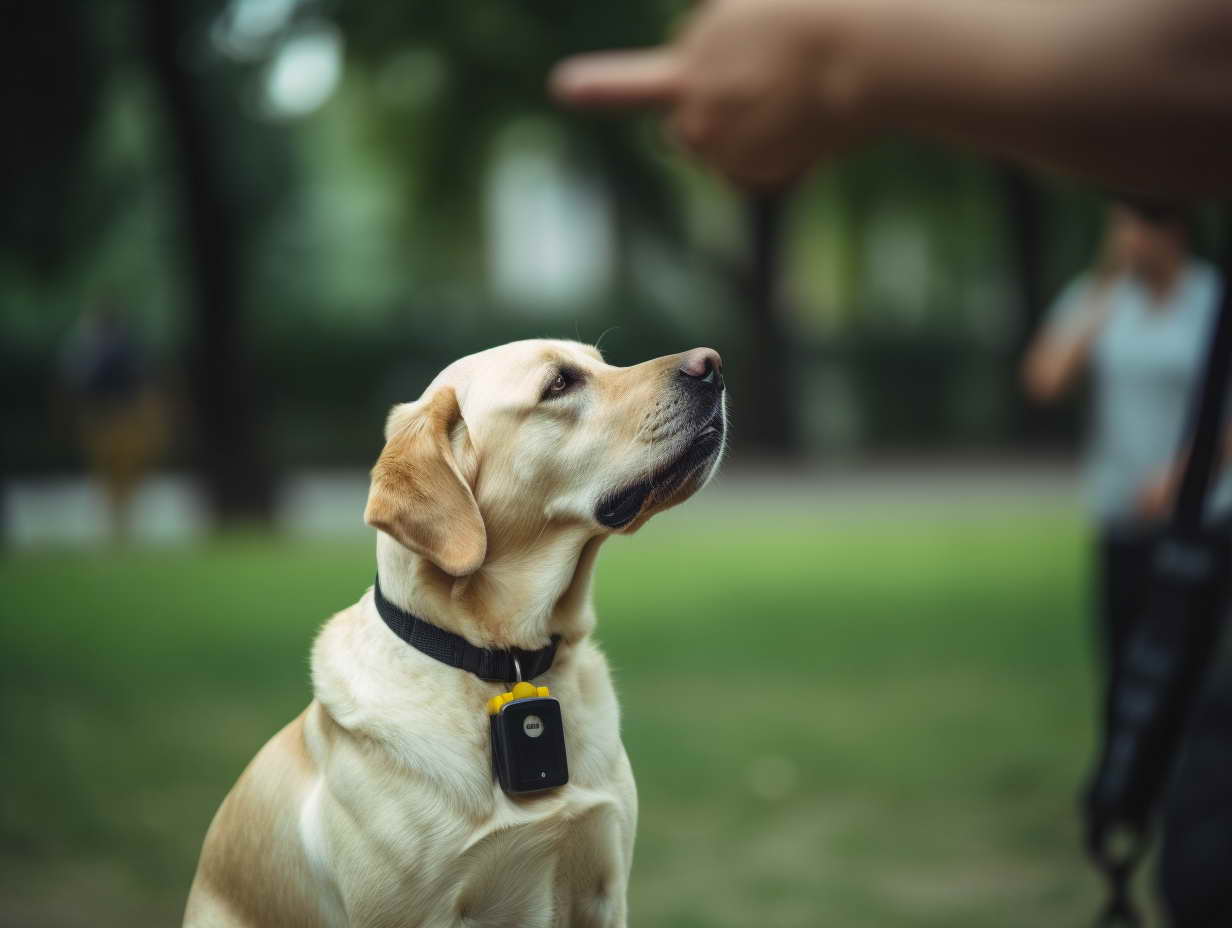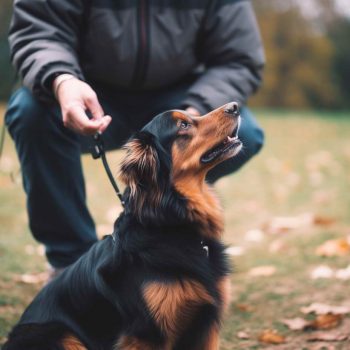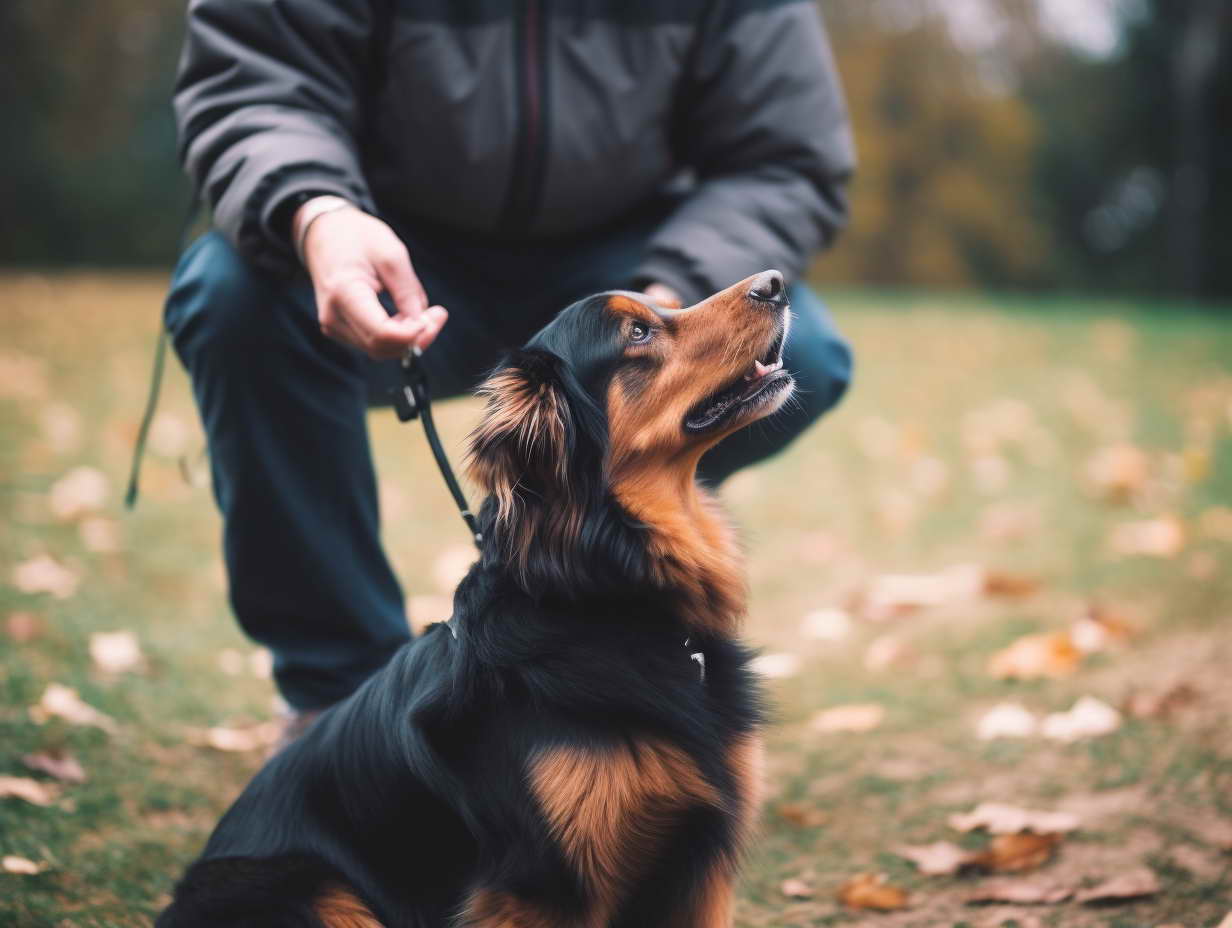Using Clicker For Dog Training: An Effective Approach to Positive Reinforcement
Welcome to the world of dog training, where the click of a small handheld device can work wonders in shaping your canine companion’s behavior. In this comprehensive guide, we delve into the art of “Using Clicker For Dog Training” – a gentle yet highly effective approach that relies on positive reinforcement.
The Power of Using Clicker For Dog Training:
Using a clicker for dog training is based on the principles of positive reinforcement. The clicker is a simple, handheld device that emits a distinct sound, usually a click, to mark desired behaviors. This sound serves as a bridge between the desired action and the reward that follows.
The Science Behind Clicker Training:
Understanding the science behind clicker training is crucial for successful implementation. When your dog performs a desired behavior, the clicker instantly marks the action, signaling to your dog that a reward is imminent. This technique helps in reinforcing positive behaviors and strengthening the bond between you and your furry friend.
Getting Started with Clicker Training:
To begin using a clicker for dog training, follow these simple steps:
- Introduce Your Dog to the Clicker: Familiarize your dog with the sound of the clicker by repeatedly clicking it and offering a treat each time.
- Pair the Clicker with Rewards: Associate the clicker with rewards by clicking and giving a treat simultaneously. Repeat this process to establish a clear connection in your dog’s mind.
- Start Clicking and Treating: Click and reward your dog for simple actions like sitting or coming when called. Be consistent and patient during this process.
The Benefits of Clicker Training:
Using a clicker for dog training offers several advantages:
- Precise Communication: The clicker provides clear communication, making it easier for your dog to understand which behavior earns a reward.
- Positive Reinforcement: Clicker training focuses on positive reinforcement, fostering a strong bond of trust and respect between you and your dog.
- Engagement and Mental Stimulation: Clicker training engages your dog’s mind, providing mental stimulation and preventing boredom.

Common Challenges and How to Overcome Them: Ensuring Success in Clicker Training
While clicker training is a highly effective and rewarding method, it’s natural to encounter some challenges along the way. Understanding these obstacles and knowing how to overcome them will ensure a successful clicker training experience for both you and your furry companion. Let’s explore the common challenges and their solutions:
1. Timing: The Key to Effective Clicker Training
Challenge: One of the most critical aspects of clicker training is precise timing. Clicking too early or too late can lead to confusion for your dog and diminish the effectiveness of the training.
Solution: Practice is essential to master the art of timing. Be attentive during training sessions, and focus on clicking the moment your dog performs the desired behavior. To refine your timing, try using a “practice clicker” away from your dog to get the feel of the right moment to click.
2. Consistency: The Foundation of Successful Training
Challenge: Consistency is key to any training method, including clicker training. Inconsistency in using the clicker or reward can lead to confusion and slow progress.
Solution: Create a consistent training routine with defined cues and rewards. Use the clicker consistently to mark desired behaviors, and always follow up with a reward. Involve all family members in the training process, ensuring everyone uses the same cues and rewards to maintain consistency.
3. Avoiding Overuse of the Clicker
Challenge: Over-clicking, or clicking too frequently, can desensitize your dog to the sound of the clicker, reducing its significance as a marker for desired behaviors.
Solution: Use the clicker sparingly and purposefully. Click only when your dog performs the specific behavior you are trying to reinforce. Avoid clicking for minor or accidental actions. By keeping the clicker’s value high, you ensure that your dog associates it with important actions and rewards.
4. Distractions and Training Environments
Challenge: Training in distracting environments or amid various stimuli can be challenging for your dog, as their attention might shift away from the clicker training.
Solution: Gradually introduce distractions during training sessions. Start in a quiet and familiar environment, then gradually add more distractions as your dog becomes proficient in the desired behaviors. Reward your dog generously for maintaining focus and responding to cues despite distractions.
5. Fading Out the Clicker
Challenge: Eventually, you’ll want to phase out the clicker and rely solely on verbal cues for commands. This transition can be tricky for some dogs.
Solution: Begin by incorporating verbal cues alongside the clicker during training. As your dog becomes more responsive to the verbal cues, gradually reduce the frequency of clicks while continuing to reward with treats. Over time, your dog will associate the verbal cues with the behavior and will respond without the need for the clicker.
6. Reinforcing Unwanted Behaviors
Challenge: During training, you may inadvertently reinforce unwanted behaviors, leading to confusion and inconsistent responses from your dog.
Solution: Be mindful of your actions and ensure you only click and reward the behaviors you want to encourage. If your dog displays an unwanted behavior, refrain from clicking, and redirect their attention to a desired behavior. Consistency in reinforcing desired behaviors will help eliminate unwanted ones.
Clicker Training vs. Traditional Training Methods:
Clicker training stands apart from traditional training methods in various ways:
- Focus on Positive Reinforcement: Clicker training relies on positive reinforcement, encouraging desired behaviors rather than punishing unwanted ones.
- Clear Communication: The clicker provides precise and immediate feedback, ensuring your dog knows exactly what actions lead to rewards.
- Strengthens the Bond: Clicker training enhances the bond between you and your dog, creating a positive and enjoyable learning experience.

Advanced Clicker Training Techniques: Taking Dog Training to the Next Level
Once your furry companion has mastered the basics of clicker training, you can elevate the training experience with advanced techniques. These methods will challenge your dog’s cognitive abilities, foster creativity, and deepen your bond with them. Let’s explore these advanced clicker training techniques:
1. Shaping: Sculpting Desired Behaviors
Shaping is a powerful technique that involves rewarding incremental steps toward a final behavior. Instead of waiting for your dog to perform the entire behavior, you break it down into smaller, achievable components. For example, if you want your dog to roll over, start by rewarding any movement toward a side tilt. Gradually increase the criteria until your dog completes the full roll-over motion. Shaping allows your dog to think, experiment, and offer behaviors, making the training process an interactive and enjoyable puzzle.
2. Chaining: Linking Behaviors for Complex Actions
Chaining is all about connecting a series of behaviors to create a sequence that culminates in a reward. This technique is ideal for teaching your dog multi-step tasks or tricks. For instance, if you wish your dog to fetch and bring a toy to you, you can break the action into steps like “fetch,” “hold,” and “come.” Train each step individually, then link them together to form a smooth chain. Chaining promotes problem-solving and encourages your dog to become an active participant in their training.
3. Target Training: Precision and Focus
Target training involves teaching your dog to touch a specific object, such as your hand, a target stick, or a specific area. It is a valuable skill that can be utilized in various situations. To begin, present the target and reward your dog for touching it. Gradually guide them to follow the target with their nose or paw. Target training can be used to teach complex tricks, agility maneuvers, and even basic obedience commands. This technique enhances your dog’s focus and precision, making them more attentive and responsive.
4. Backward Chaining: The Power of Rewarded Endings
Backward chaining is an approach where you start with the final behavior and work backward. This method is particularly useful for complex behaviors or tasks that have a definitive endpoint. For instance, teaching your dog to close a door can be accomplished with backward chaining. Initially, your dog is rewarded for pushing the door shut with their nose or paw, and then you gradually introduce earlier steps in the process. Backward chaining instills confidence in your dog, knowing they will be rewarded for completing the entire sequence successfully.
5. Free-Shaping: Encouraging Creativity and Initiative
Free-shaping is a unique technique that encourages your dog’s creativity and initiative. Unlike other methods, where you guide your dog towards specific behaviors, free-shaping allows your dog to offer any behavior they like. You simply wait for your dog to offer something interesting or novel, and when they do, you click and reward it. This approach can lead to innovative tricks and behaviors that your dog comes up with on their own, fostering a stronger sense of independence and problem-solving skills.
6. Discrimination Training: Refining Responses
Discrimination training involves teaching your dog to differentiate between various cues or stimuli. For instance, you can train your dog to respond differently to multiple targets, sounds, or objects. Discrimination training enhances your dog’s cognitive abilities, helping them make quick and accurate decisions based on specific cues. It is particularly beneficial for working dogs and those involved in performance sports.
Frequently Asked Questions (FAQs):
Can I start clicker training with any dog, regardless of age or breed?
Absolutely! Clicker training is suitable for dogs of all ages and breeds. It is a gentle and effective training method that can be tailored to suit individual needs.
How do I choose the right clicker for my dog?
Select a clicker with a distinct, consistent sound that your dog can easily distinguish. Consider a clicker that fits comfortably in your hand for easy handling.
Can clicker training be used to address behavioral issues?
Yes, clicker training can be beneficial in addressing behavioral problems. By reinforcing positive behaviors, you can replace unwanted ones effectively.
Is clicker training time-consuming?
Clicker training can be quick and efficient when done correctly. Consistency and patience are key factors in achieving successful results.
Can I use treats other than food for clicker training?
Absolutely! While treats are commonly used, you can also use toys, praise, or any other reward that motivates your dog.
What if my dog doesn’t respond to the clicker?
If your dog doesn’t respond initially, don’t worry. You may need to work on associating the clicker with rewards more consistently or try using a different type of reward.
Conclusion:
Using a clicker for dog training is a powerful and humane way to shape your dog’s behavior positively. By leveraging the principles of positive reinforcement, you can strengthen your bond with your furry companion while helping them become well-behaved and happy pets. So, grab your clicker and embark on an exciting journey of training and discovery with your four-legged friend.


Leave a Reply